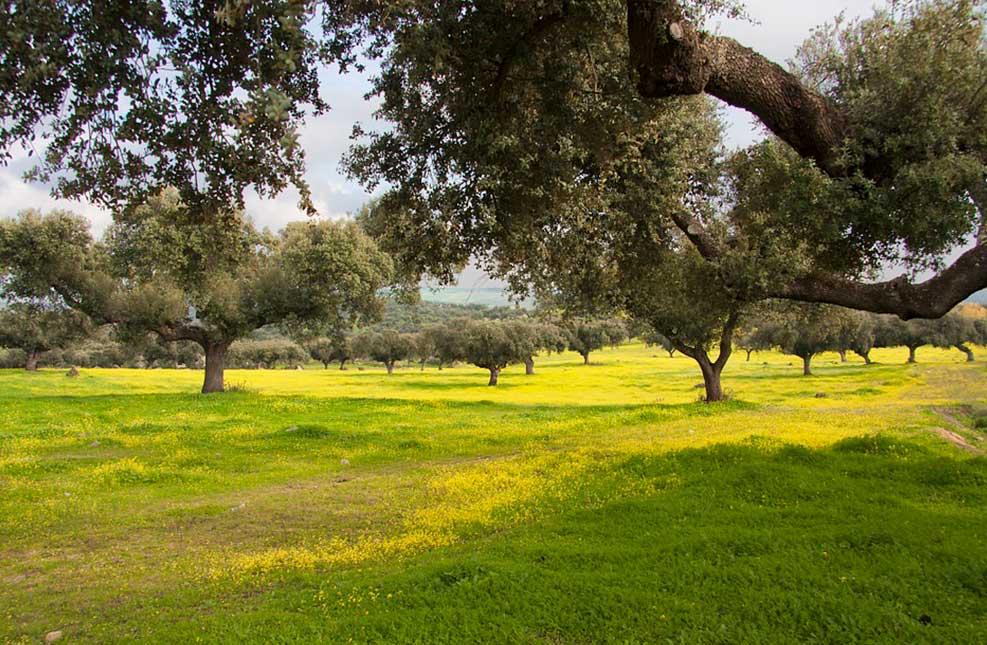
Iberian pastureland
The Iberian Pastureland is a type of ecosystem made up of holm oaks, cork oaks, gall oaks and kermes oaks, very typical in the south and southeast of the Iberian Peninsula. These are large areas of land cared for by men so that the pig can graze freely and fatten in the traditional way.
In order to give a more detailed explanation of this important term in the world of ham, we will begin by saying that the word Dehesa comes from the Latin for “defesa”, which means
“defence” or “limited land” for the use of pastures.
The development and exploitation of these extensions of land is directly linked to the period known as the Reconquest, in addition, it is known that it was from the thirteenth century when farmers began to fence the farms in order to make closed roads for the herd during grazing.
The Iberian Pastureland in Spain
The pastures in Spain are undoubtedly magical places thanks to their uniqueness and great biodiversity; what makes this type of land special is a high percentage of wooded mass that produces acorns.
This mass includes species of the genus quercus such as the famous holm oaks, cork oaks or gall oaks, but in the Meadows we can also find chestnuts, wild olive trees, strawberry trees, mastic trees or rockroses.
The Ministry of Agriculture is responsible for ensuring control of these territories and, according to its data, the area of the countryside classified as pastureland is between 3.5 and 5 million hectares distributed as follows (approximate data):
- Extremadura: 1,237,000 hectares
- Andalusia: 946,482 hectares
- Castilla La Mancha: 751,554 hectares
- Castilla and Leon: 467,759 hectares
- Madrid: 113,051 hectares
In these areas there are around 25,000 farms, of which, according to the same entity, 8,000 have more than 100 hectares; 75% of the total is private property and the rest belongs to communal properties, groups of residents and town halls.
Importance of the Dehesa
The Iberian pigs feed in the Dehesas, we would not be able to enjoy such spectacular products as Iberian Bellota ham without these magnificent meadows. At the same time, these areas are also of exuberant beauty and rich in biodiversity.
This contribution to the environment has a direct influence on the economy of the regions in which they are located, that is there are many livestock farms that are carried out in the Dehesas integrated not only by pigs but also by sheep, goats, cows, bulls of Lidia, purebred Spanish horses and other breeds and species such as the Andalusian donkey, the white cow from Caceres and the blue hen from Extremadura.
The Iberian pigs reared in the Dehesa are the origin of all the “Iberico Bellota” products, as far as ham is concerned, these products will be identified with the red bridle when they are made of 50% Ibérico Bellota Ham or Bellota Ham Shoulder and/or 75% Ibérico Bellota Ham or Ham Shoulder and with the black bridle, in the case of pure-bred Iberian pigs, i.e. 100% Iberico Bellota hams and ham shoulders.

Buy 100% Iberico Bellota Ham

Buy 50% Ibérico Bellota Ham



